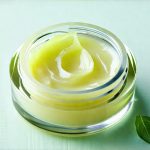Herbal Oils That Hydrate Without Sensory Irritation
Many individuals seek natural alternatives for skincare, desiring deeply hydrated skin without the common drawbacks associated with conventional products – redness, stinging, or overpowering fragrances. Traditional beauty routines often rely on synthetic ingredients that can trigger sensitivities, leaving a growing number of people searching for gentle yet effective options. This pursuit leads many to explore the world of herbal-infused oils, which offer not only moisturizing benefits but also potential therapeutic properties derived from plants themselves. However, simply choosing any oil isn’t enough; the key lies in understanding which oils are naturally mild and how they can be incorporated into a skincare regimen that respects sensitive skin or those prone to irritation.
The challenge with many conventional hydrating products is their reliance on potentially irritating components like alcohol, synthetic fragrances, and harsh preservatives. Even seemingly innocuous ingredients can cause reactions in susceptible individuals. Herbal oils present a compelling solution because they often contain inherent properties that soothe and protect the skin barrier while delivering essential fatty acids necessary for hydration. The art of creating truly gentle skincare with herbal oils lies in careful selection, proper infusion techniques, and an awareness of individual skin needs. It’s about harnessing nature’s power to nourish without compromise.
Understanding Gentle Oil Profiles
The foundation of irritation-free hydration begins with choosing the right carrier and infused herbs. Not all oils are created equal; some inherently possess more potential for sensitivity than others. Highly volatile or strongly scented oils, while appealing to some, can be problematic for sensitive skin. We need to focus on oils known for their mildness and compatibility with a wide range of skin types. Jojoba oil, despite its name, is technically a liquid wax, closely mimicking the skin’s natural sebum. This makes it exceptionally well-tolerated and unlikely to clog pores. Similarly, sweet almond oil is rich in vitamin E and fatty acids, offering deep hydration without being overly heavy or irritating. Fractionated coconut oil, which has had its long-chain fatty acids removed, provides a lightweight texture that’s less comedogenic than standard coconut oil.
The process of infusion also plays a crucial role. Cold-infusion methods – where herbs are steeped in the carrier oil at room temperature for several weeks – preserve the delicate compounds within the plants without exposing them to heat that could alter their properties or create irritation. Using organically grown herbs is paramount, minimizing exposure to pesticides and ensuring purity. Finally, it’s important to consider individual sensitivities. Even gentle oils can cause reactions in some people, so patch testing any new oil blend on a small area of skin before widespread application is always recommended.
Herbal Allies for Sensitive Skin
Beyond the carrier oil itself, the herbs infused within dramatically impact the overall soothing and hydrating capabilities. Several herbs are renowned for their ability to calm inflammation and support skin health without causing irritation. Chamomile, particularly German chamomile, contains azulene, a potent anti-inflammatory compound that can reduce redness and soothe irritated skin. Calendula is another excellent choice, known for its wound-healing properties and gentle nature. It helps to strengthen the skin barrier and promote regeneration. Oat oil, derived from colloidal oats, provides a unique form of hydration while also relieving itchiness and calming inflammation.
These herbs aren’t just about addressing existing irritation; they actively support the skin’s natural healing processes. Incorporating them into an herbal oil blend creates a synergistic effect – where the combined benefits are greater than the sum of their parts. For example, combining chamomile and calendula infused in sweet almond oil offers both immediate soothing relief and long-term barrier strengthening. The goal is to create a personalized blend that addresses specific skin concerns while prioritizing gentle hydration.
Creating Your Own Infused Oil Blend
Making your own infused oil allows for complete control over the ingredients and ensures maximum freshness. Here’s a step-by-step guide:
- Choose your carrier oil: Jojoba, sweet almond, or fractionated coconut oil are all excellent starting points.
- Select your herbs: Opt for organically grown chamomile, calendula, oats (dried colloidal oats work well), or lavender flowers – individually or in combination.
- Prepare the infusion: Place dried herbs into a clean, dry glass jar. The ratio typically ranges from 1-4 ounces of dried herb per pint of carrier oil, depending on desired potency.
- Cover with oil: Pour your chosen carrier oil over the herbs, ensuring they are fully submerged.
- Infuse for 4-6 weeks: Seal the jar and place it in a cool, dark place. Shake gently every few days.
- Strain & Store: After infusion, strain the oil through cheesecloth or a fine mesh sieve into a clean bottle. Store in a cool, dark place to preserve its potency.
The resulting infused oil can then be used directly on the skin or incorporated into creams, lotions, or serums. Remember to always patch test before widespread use. The beauty of making your own blends is that you can tailor them precisely to your individual needs and preferences. To further enhance your skincare routine, consider incorporating herbs known for their soothing properties, like those found in these herbal additions.
Patch Testing & Identifying Reactions
Even with gentle oils, it’s vital to perform a patch test before applying any new product liberally across the skin. This simple step can prevent potential irritation and ensure compatibility. Apply a small amount of the oil blend to a discreet area – such as the inner forearm or behind the ear – and observe for 24-48 hours.
- Look for signs of redness, itching, burning, or swelling.
- If any reaction occurs, discontinue use immediately.
- It’s also important to note that reactions can develop over time, so even if initial tests are clear, monitor your skin carefully after regular use.
Identifying the cause of a reaction is crucial. Is it the carrier oil itself? Or perhaps one of the infused herbs? Keeping track of ingredients and observing how your skin responds will help you refine your blends and avoid future sensitivities. Dilution can also be a key factor; if an oil feels too strong, even after patch testing, try diluting it further with another gentle carrier oil.
Storage & Shelf Life Considerations
Proper storage is essential for maintaining the quality and potency of herbal oils. Exposure to light, heat, and air can degrade the beneficial compounds and shorten shelf life. Store infused oils in dark glass bottles – amber or cobalt blue are ideal – in a cool, dry place away from direct sunlight.
- Keep lids tightly sealed to prevent oxidation.
- Refrigeration isn’t generally necessary but can extend shelf life, especially for oils containing more delicate herbs.
- Shelf life varies depending on the carrier oil and infused herbs, but typically ranges from 6-12 months.
A simple way to assess freshness is by smell. If the oil develops a rancid or off-putting odor, it’s time to discard it. Utilizing fresh, high-quality ingredients and following proper storage guidelines will ensure that your herbal oils remain effective and continue to nourish your skin without causing irritation for as long as possible. For those seeking holistic wellness beyond skincare, exploring herbal vinegar dressings can offer a gentle approach to internal health.





















